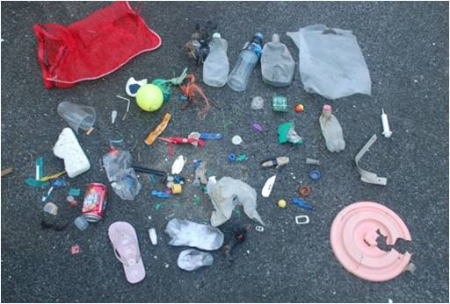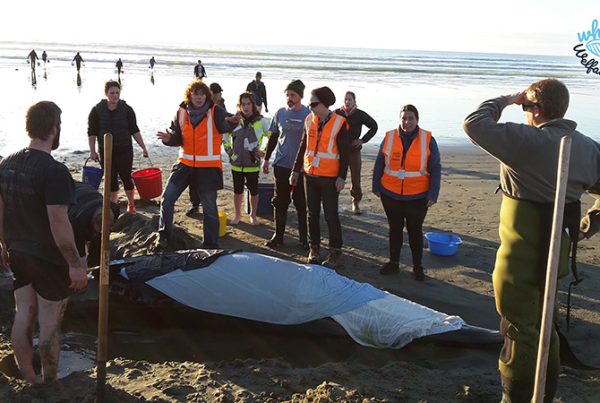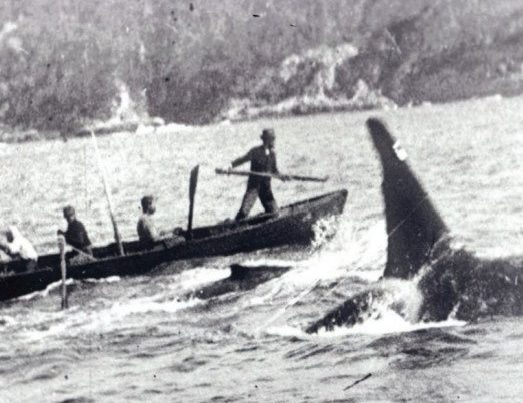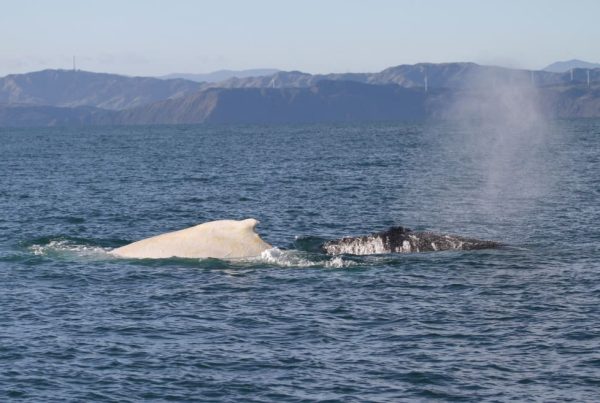
The ocean covers most of the planet and is home to 97 percent of life on Earth. It drives and moderates our climate and weather and is the ultimate source of the water we drink and much of the air we breathe. It’s also home to millions of animals, including the world’s largest and our favourite – the mighty whale. But unfortunately our ocean is sick, and we’ve made it that way.
For whatever reason, we’ve allowed rubbish and other pollutant to get into the ocean, directly affecting its health, the health of the animals that live in it, and our own.
Each year more than 7 billion tonnes of rubbish makes its way into the sea. On its journey it kills, maims and injures wildlife and pollutes the ecosystems that they depend on for food, shelter, and to raise their young. Thousands of animals die each year, become trapped in or choke on the rubbish that we throw away.
In March 2009 a Blue Whale washed up dead on the north east coast of the South Island in New Zealand. Several metres of shipping rope were later found in its throat and gut.
Marine debris comes in many shapes and forms, from cigarette butts to plastic bags, fishing gear, bits of boats and aluminium cans. There’s even nastier stuff such as used diapers, condoms or syringes. Most marine debris will not biodegrade, which means it will stay in the environment for hundreds of years, if not forever.
Where does Marine Debris come from?
The simple answer is us. Marine debris may be dumped or blown off ships and stationary platforms at sea, but 80% of it comes from land.
Litter can travel to the ocean from many miles inland, blown on the wind or carried along by rivers and streams. It’s not difficult. For example, a plastic carrier bag carried from a store in Te Puke, may blow from a picnic table, wash down a storm drain to the river and wind up being swallowed by a whale. We’re not kidding.
In August 2000, a Bryde’s whale died in Trinity Bay, Australia. A post-mortem found that the whale’s stomach was full of plastic; supermarket bags, food packages, bait bags, and three sheets of plastic. It had no food in its stomach.
Sadly, floating debris looks like food to a lot of marine animals or they accidentally swallow it.
Then of course, there’s overflowing sewage systems and storm drains that add to the burden by ferrying rubbish from rural roads and city streets to the sea. And, despite regulations against dumping, some boaties still drop rubbish directly into the ocean.
In recent years, organic materials that were once the most prevalent component of marine debris have been supplanted by synthetics. Not only do items like packing straps, tarps, nets, and containers last for years, but also they are often highly buoyant, travelling thousands of miles on ocean currents.
- Shoreline and Recreational Activities – The majority of marine debris comes from land-based activities like eating fast food and discarding the wrappers, beach trips, picnics, sports and recreation, even festivals. Litter washes into the ocean from streets, car parks, and storm drains.
- Ocean/Waterway Activities – People engaged in recreational fishing and boating, commercial fishing, cargo/military/cruise ship operations, and offshore industries such as oil drilling contribute to marine debris.
- Smoking-related Activities – Careless disposal of cigarette filters, cigar tips, lighters, and tobacco product packaging is common on both land and sea.
- Dumping – Legal and illegal dumping of domestic and industrial garbage, construction materials, or large household appliances puts big quantities of harmful items into the ocean.
- Medical/Personal Hygiene – Items ranging from tampons and disposable diapers to syringes enter the water most often through sewer systems.
ime it takes for items to break down in the marine environment
| Fruit 2 weeks | Paper towel 2-4 weeks |
| Newspaper 3 weeks | Cotton cloth 1-5 months |
| Cardboard box 2 months | Milk carton 3 months |
| Tin can 1-3 years | Natural fibre rope 14 months |
| Cigarette Butt 10 years | Styrofoam cup 50 years |
| Plastic bag 100-400 years | 6 pack rings 400 years |
| Plastic bottles 450 years | Glass bottles 300 years |
| Aluminium can 200-500 years | Monofilament fishing net 600 yrs |
Source: Ocean Conservancy, 2006
Whilst marine debris is a global issue it’s something that requires local and immediate action. Find out how you can take action and make a difference today.
The image above is a collection of rubbish picked up in 30 minutes on a single beach on Motora Island in the Hauraki Gulf.


